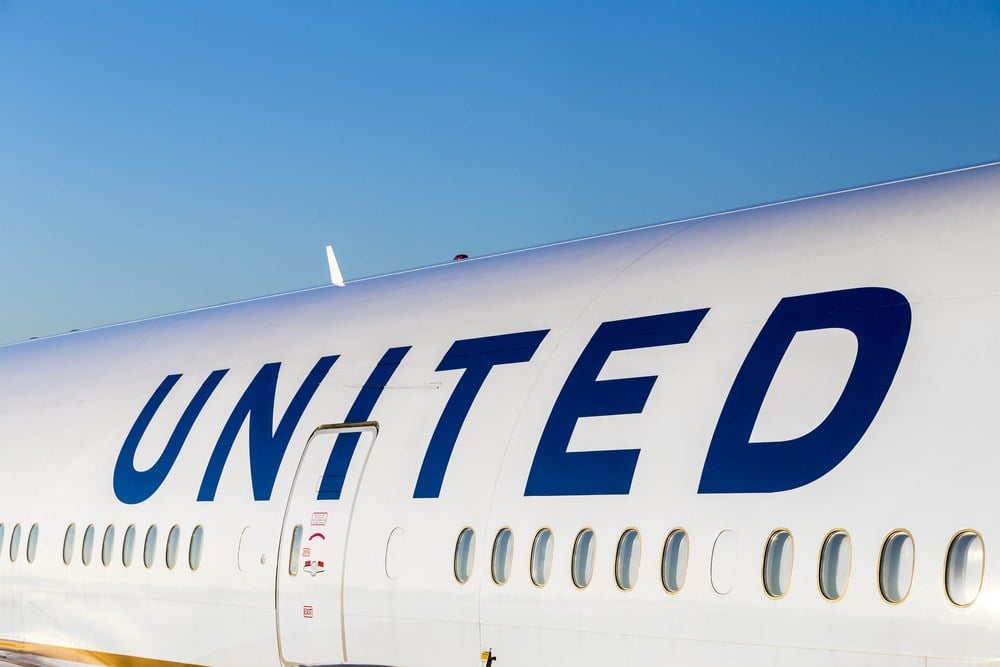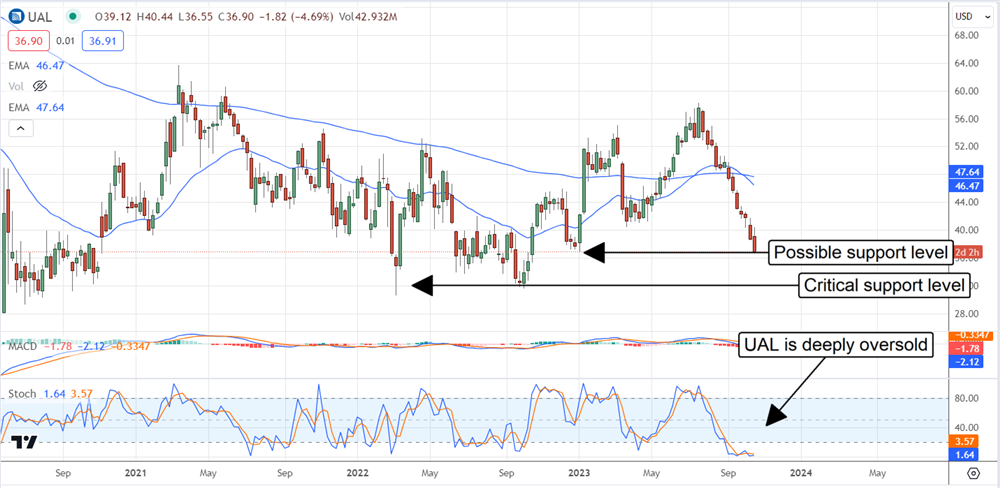Financial News
United Airlines Shares Fall Despite Solid Quarter

United Airlines (NASDAQ: UAL) shares fell following a better-than-expected Q3 report suggesting an entry point is developing. The news is offset by weaker-than-expected guidance caused by factors outside the company’s control. The war in Israel is disrupting travel to the country and the region and may shave a solid double-digit figure off the expected Q4 results if the issue persists.
The takeaway for investors is that seat demand is high, driving solid business for the company, and will not evaporate because of the war in Israel. While near-term headwinds are weighing on the share price now, a move to the bottom of the 3-year trading range should result in another touch-and-go event for UAL investors.
United Airlines Has Solid Quarter on Higher Passenger Count
United Airlines had a solid quarter driven by pent-up demand. Travel demand is robust, and business-related travel is on the rise. The company produced $14.48 billion in net revenue, a record and up 12.4% compared to last year. This is 200 basis points better than the growth Delta produced, which outpaced the consensus by 500.
The revenue gain was driven by a 15% increase in capacity and passengers, offset by a low-single-digit decline in revenue per passenger mile. Regionally, all segments produced growth led by a 22.6% increase in International. Notably, premium and rewards traffic were significant contributors to results.
The company also reported record profitability in several segments, with systemwide EBIT up 29% compared to last year. This led to $1.1 billion in net income, up nearly 17% YOY, and $3.65 in adjusted earnings. The adjusted earnings are up 30% YOY and aiding debt reduction. The bad news is the guidance; the war in Israel already impacts guidance, and the impact will likely grow. The takeaway is that demand will likely remain resilient and result in a business surge once air traffic to Israel resumes.
United Airlines Hampered by Capital Return Program
United Airlines stock trades at a significant discount to Delta Air Lines (NYSE: DAL), but there is a reason. While both relied heavily on debt during the pandemic, United was already weaker and will take longer to recover. Net debt leverage is down at 2.5X, but total debt remains high and will impact cash flow for the next few years. That means United Airlines will unlikely start paying a dividend compared to Delta, which already does. Delta’s distribution isn’t large but sustainable and has a growth outlook. The assumption is that Delta will continue to pay down debt and slowly raise the dividend to the 2019 levels.
The analysts are bullish on United Airlines' recovery and have the stock pegged at Moderate Buy. The consensus price target for the stock edged lower ahead of the release but remains strong at $65. That’s about 77% above the current price action, and even the low end of the range assumes some upside. The low price target of $44 was set a week before the release by Susquehanna, which has a Neutral rating on the stock. That target implies a nearly 20% upside from the stock’s post-release price action.
The Technical Outlook: United Airlines is Coming in Hot
The price action in United Airlines is declining and quickly approaching a critical support level. The critical support is near the multi-year low, where several significant price reversals have occurred. Assuming the market can shake off its near-term fears and focus on the bigger picture, this stock should rebound from that level again. If not, United Airlines could continue lower and retest the 2020 lows, where it would present an even deeper value.

More News
View More





Quotes delayed at least 20 minutes.
By accessing this page, you agree to the following
Privacy Policy and Terms Of Service.



